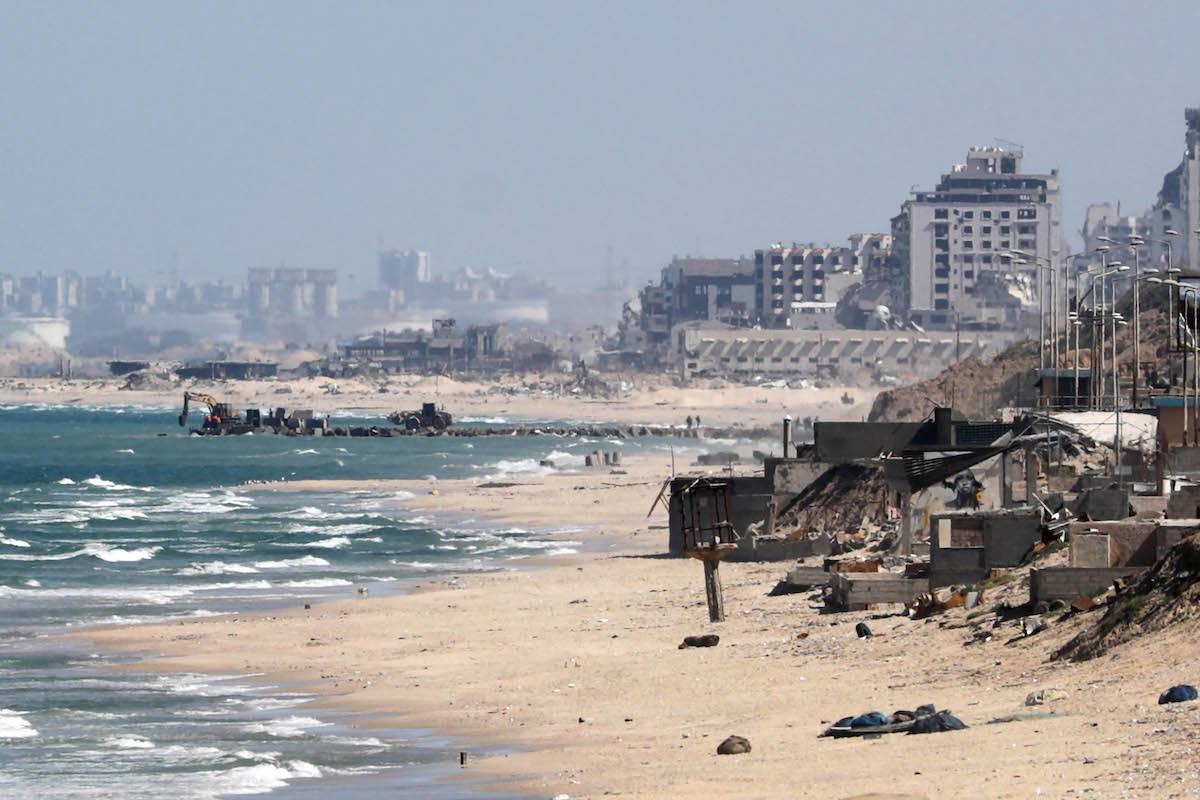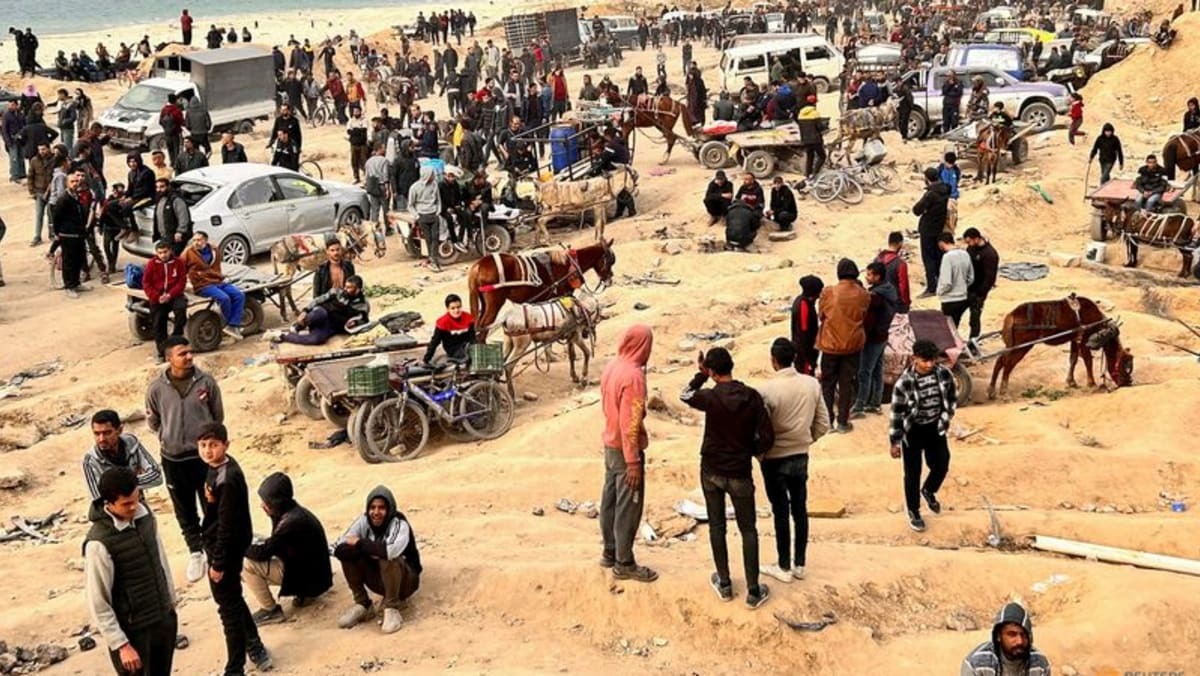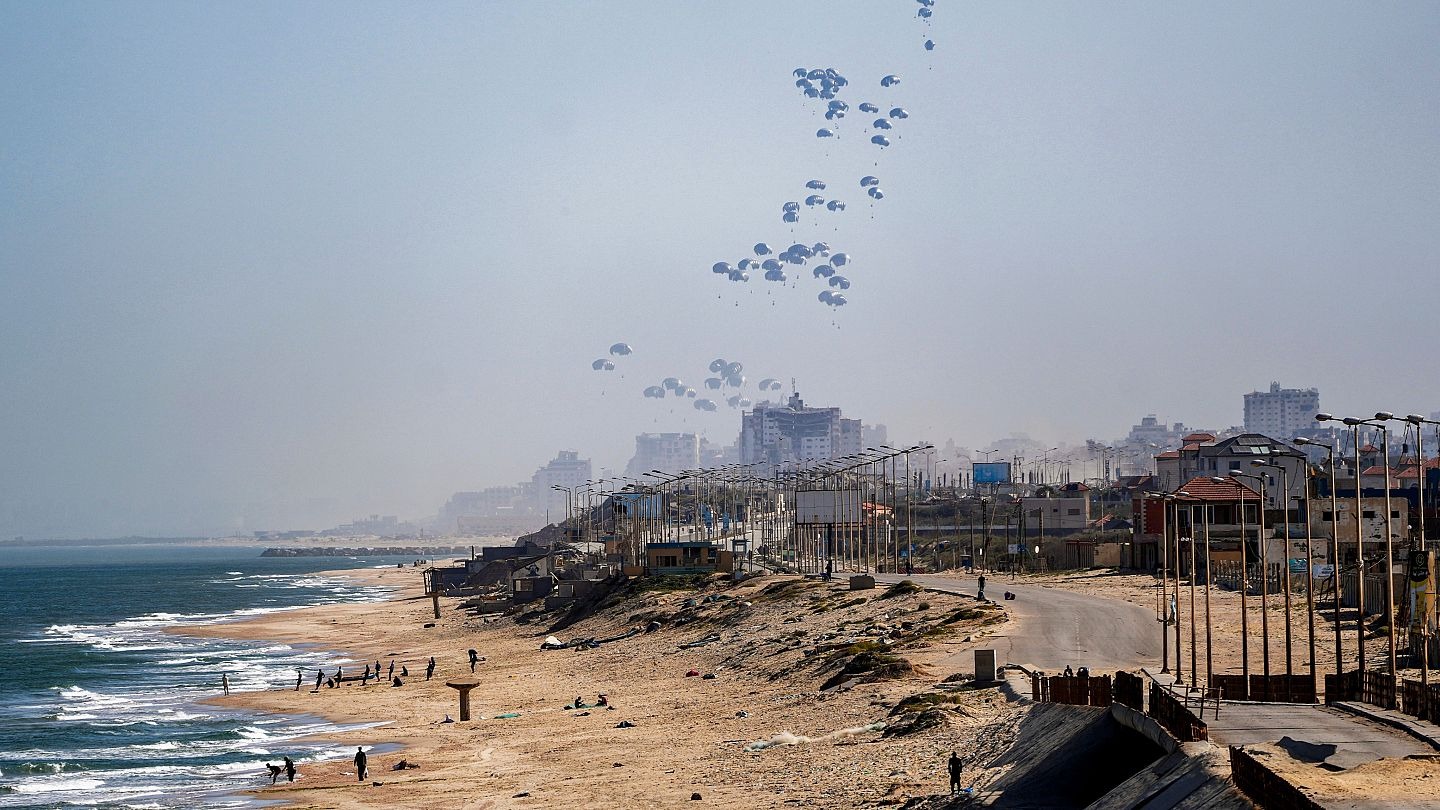The United States is sending eight Army and Navy ships from Virginia to construct a temporary pier off the coast of the Gaza Strip. The primary goal of this endeavor is to provide essential supplies like food to the Palestinians despite the ongoing conflict between Israel and Hamas and the subsequent humanitarian crisis in Gaza.
Even before the events of October 7, 2023, when Hamas carried out a massacre of Israeli citizens triggering the conflict, a portion of Palestinians in Gaza depended on foreign aid, including food assistance, for their basic needs, with approximately 80% relying on it. Presently, the United Nations warns that half of Gaza’s population faces the threat of famine within the coming months.
Expected to become operational by May 2024, the new pier holds the potential to deliver up to 2 million meals daily to the estimated 2.2 million residents of Gaza.

US’s temporary pier in Gaza occupation port (Credits: Middle East Monitor)
However, numerous challenges hinder the delivery of aid to Gaza, including restricted entry points, Israeli limitations on imports, poor road infrastructure, and security risks. While Israel claims it does not directly obstruct aid deliveries, some critics dispute this assertion.
The United Nations is urging Israel to authorize food truck convoys managed by the principal U.N. aid agency in Gaza, UNRWA, despite Israel’s announcement in March 2024 that it would cease cooperation with UNRWA.
Feeding the entire Gaza population would necessitate an increase in daily food deliveries, including airdrops and hundreds of trucks daily, far surpassing the current delivery capacity.
The Impact of Temporary Pier Construction
As a former White House national security aide and U.S. diplomat, I comprehend the intricacies involved in coordinating civilian-military operations, like constructing a pier during a conflict, including the associated logistical challenges, high costs, and security concerns.
The temporary pier construction will involve around 1,000 U.S. soldiers, facilitating the transfer of goods from ships arriving from Cyprus to Gaza by water without U.S. personnel setting foot in Gaza itself. Government contractors will manage the transportation of products by boat from the pier to Gaza, located approximately 3 miles away.

Gaza inhabitants (Credits: CNA)
A completed project will feature a floating pier connected to an 1,800-foot-long causeway extending from the shore, alongside boats aiding in the sorting and transportation of aid, and barges facilitating the transfer of goods from the pier.
While the U.S. has a history of constructing temporary piers for military and humanitarian purposes, the security risks associated with such operations during active conflicts remain important. Although Israel has approved the operation, concerns persist about potential attacks from groups like Hamas or other Iranian-backed proxies in Gaza.
As for the project’s cost, while major military operations are known to be expensive, the precise financial implications of the Gaza pier project are not publicly disclosed. It’s worth noting the irony that the U.S., as the largest provider of foreign aid to Israel, is now funding a project to deliver aid to Palestinians affected by the conflict caused by its ally’s use of U.S.-supplied weapons.























